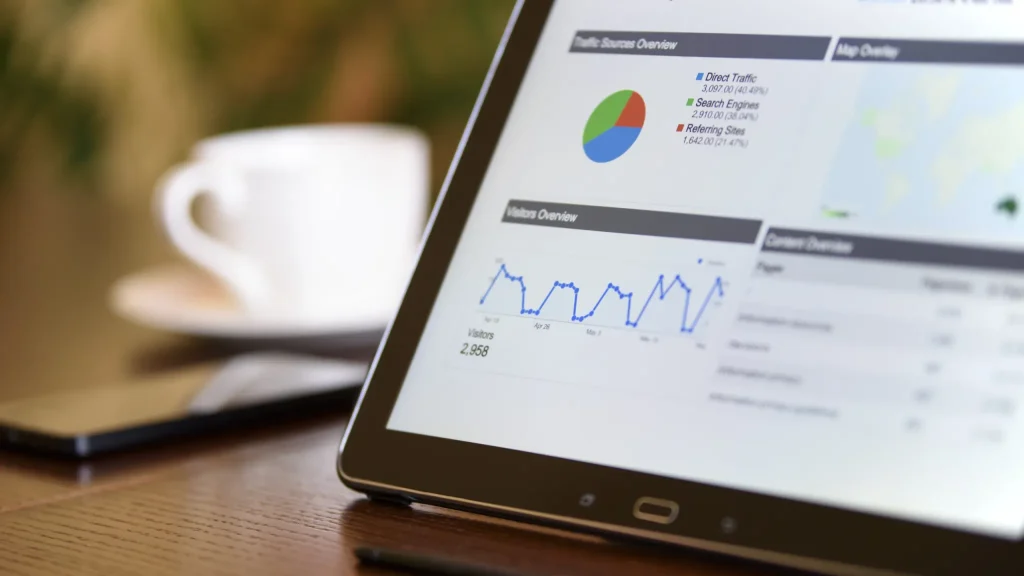Google Discovery Ads are built to catch people’s attention before they even start searching. These ads use large images and smart audience targeting to show up across Google’s biggest platforms like YouTube, Gmail, and the Google app Discover feed.
In 2024, Google began moving Discovery campaigns into a new format called Demand Gen, but the core system is still the same, like image-focused ads backed by Google’s machine learning.
In this blog, we’ll walk you through what Google Discovery Ads are, their benefits, examples, and tips to improve it.
For marketing managers and founders who want to grow reach without relying only on Search campaigns, Discovery Ads offer a direct way to connect with potential buyers.
Ostenpowers can help you create or review a campaign so you launch with a clear plan and avoid wasted spend.
What Are Google Discovery Ads?

Google Discovery Ads are a type of automated Google Ads campaign designed to reach people who are most likely to buy, subscribe, or sign up based on their recent behaviour across Google platforms.
Instead of bidding on keywords like a traditional Search campaign, you upload creative assets, such as images, headlines, and descriptions, and let Google’s machine learning decide who to show the ads to.
The system uses audience signals such as purchase intent, browsing history, and engagement patterns to predict when someone is ready to take action. This makes Discovery Ads a strong fit for e-commerce brands looking to increase sales.
In addition to that, Discover Ads is also recommended for service businesses that need high-quality lead generation without relying on expensive Search clicks.
Discovery Ads vs Display Ads (and Demand Gen)
Many advertisers confuse Discovery with Display, but they serve different purposes even though both use images. Discovery Ads focus on Google’s own premium surfaces, while Display covers a wide network of partner websites.
With Discovery, your ads appear only on YouTube Home and Watch Next feeds, Gmail Promotions and Social tabs, and the Google app Discover feed. Display Ads, on the other hand, can run across millions of partner sites and apps in the Google Display Network.
Targeting is also different. Discovery Ads use Google’s audience data, like in-market segments, custom intent audiences, and remarketing lists, rather than letting you choose placements site by site.
You give Google your creative assets and budget, then rely on its automation for bidding and optimisation. This means less manual control but better use of Google’s predictive signals.
In 2024, Google started migrating Discovery to Demand Gen, which keeps the same placements but adds new video options and better creative testing.
If you are trying to decide between these formats, check our guide on Google Display ad sizes. You can learn how Display fits into a wider strategy and compare it with Discovery’s feed-focused approach.
Where Discovery Ads Show

Discovery Ads appear only inside Google’s own high-traffic platforms where users are already engaged with personalised content. Your ads can surface in three key locations:
- YouTube Home and Watch Next feeds: Ads show as native cards in between recommended videos, where people are already browsing for entertainment or product reviews.
- Gmail Promotions and Social tabs: Ads look like expandable emails and appear alongside promotional content in Gmail inboxes, giving you direct visibility in a personal space.
Google Discover feed in the Google app: Ads blend with curated news and articles on Android and iOS devices, reaching users who are scrolling through personalised updates.
These placements give access to billions of impressions every month and let you reach users during moments of passive browsing rather than active search.
Because these placements are exclusive to Google’s own properties, you avoid low-quality partner sites and maintain strong brand safety.
Google Discovery Ads / Demand Gen Specs & Asset Requirements

Following asset specs is critical for approval and strong performance. Discovery Ads require multiple image formats to cover all placements: landscape 1200 × 628 pixels, square 1200 × 1200 pixels, and portrait 960 × 1200 pixels.
High-resolution images are a must, but keep each file under 100 KB for faster load times. You also need at least one square logo at 120 × 120 pixels, with an optional horizontal logo if available.
Each campaign should include at least five headlines (up to 40 characters each) and five descriptions (up to 90 characters each) to give Google enough variations for testing.
Call-to-action buttons can be chosen from preset options like “Shop Now,” “Sign Up,” or “Learn More,” or you can let Google automatically select the best-performing CTA.
Double-check your creative against discovery ads specs/image sizes to prevent disapprovals and ensure every asset displays correctly across all feeds.
Benefits of Using Google Discovery Ads

Discovery Ads combine the visual appeal of social media ads with Google’s deep audience targeting. They reach billions of users across Google’s premium feeds, giving you immediate scale.
Because the ads are shown to people based on purchase intent signals, you can reach audiences who are closer to making a decision than the broad reach you’d get with Display campaigns.
Discovery also integrates with automated bidding strategies like Target CPA or Max Conversions, which helps optimise spend toward conversions instead of just clicks.
For e-commerce, Discovery is ideal for showing new product launches or seasonal sales to people who have shown interest in related items. For service-based businesses, it can capture leads by retargeting users who visited your site but didn’t convert.
If you are already running Search campaigns, adding Discovery gives you another way to stay visible to warm prospects without competing directly on expensive keywords.
How to Set Up Google Discovery Ads

Setting up a campaign is simple but requires planning. Inside Google Ads, create a new campaign and select Discovery or Demand Gen as the objective.
Choose your goal, such as sales, leads, or website traffic. Then, set a budget that matches your desired reach. Pick a bidding strategy such as Target CPA for cost control or Max Conversions for volume.
Next, define audience segments using Google’s built-in options, like in-market audiences, life event segments, or your own remarketing lists. Upload all required images, logos, headlines, and descriptions. Provide as many variations as possible to allow Google’s machine learning to test combinations and find the best performers.
Launch the campaign and allow at least 2–3 weeks for the learning period before making major changes. During this time, monitor performance closely and be ready to adjust bids or creative if CTR or conversions remain low.
Tips to Improve Google Discovery Ads Performance
Strong creativity is the single biggest driver of success in Discovery campaigns. Use high-quality lifestyle images that show products in context rather than plain product shots.
Test different headline angles, such as urgency, benefit-driven copy, or social proof, to see what resonates with your audience. Refresh images and copy every 30 to 45 days to avoid ad fatigue.
Leverage custom intent audiences by importing top-performing keywords from your Search campaigns and creating audiences of people who have searched for those terms.
This allows you to combine the intent of Search with the scale of Discovery. Keep a close eye on CTR and engagement metrics. If your CTR starts to drop, revisit your creative or headline strategy.
For detailed creative testing tactics, check our guide to improve Google Ads CTR and apply those principles to Discovery placements.
FAQs about Google Discovery Ads
Do Discovery Ads still exist or are they called Demand Gen now?
Yes, Discovery campaigns are being transitioned into Demand Gen. The name is changing and new video features are being added, but the core placements on YouTube, Gmail, and Google Discover remain the same.
Do Discovery Ads use keywords?
No. Discovery campaigns rely on Google’s audience signals instead of keyword targeting. You do not need to build keyword lists.
Are they better than Display or Performance Max?
It depends on your goal. Discovery is best for mid-funnel campaigns where you want strong visuals and high-intent audiences. Display is better for broad brand awareness.
Performance Max covers all Google channels and works well when you want full automation but less control.
Ready to Test Discovery Ads?
If you’re ready to reach new customers across YouTube, Gmail, and the Google app, now is the time to set up a Discovery or Demand Gen campaign.
A well-structured Discovery campaign can unlock new revenue streams without relying only on Search or social ads, making it an essential part of any modern marketing mix.
If you’re looking for a Google Ads agency from Sydney, you can check out Ostenpowers for the best digital marketing consultation.
Ostenpowers helps you to review your current strategy, set clear conversion targets, and launch ads that actually perform.
Book a free consult or campaign audit with Ostenpowers now!









